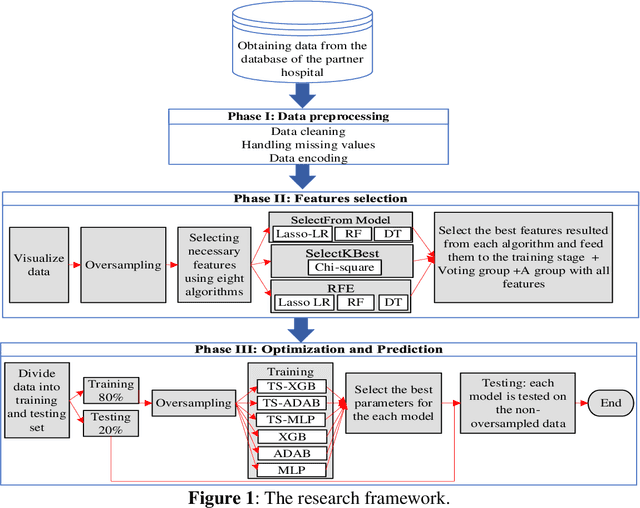An Integrated Optimization and Machine Learning Models to Predict the Admission Status of Emergency Patients
Paper and Code
Feb 18, 2022



This work proposes a framework for optimizing machine learning algorithms. The practicality of the framework is illustrated using an important case study from the healthcare domain, which is predicting the admission status of emergency department (ED) patients (e.g., admitted vs. discharged) using patient data at the time of triage. The proposed framework can mitigate the crowding problem by proactively planning the patient boarding process. A large retrospective dataset of patient records is obtained from the electronic health record database of all ED visits over three years from three major locations of a healthcare provider in the Midwest of the US. Three machine learning algorithms are proposed: T-XGB, T-ADAB, and T-MLP. T-XGB integrates extreme gradient boosting (XGB) and Tabu Search (TS), T-ADAB integrates Adaboost and TS, and T-MLP integrates multi-layer perceptron (MLP) and TS. The proposed algorithms are compared with the traditional algorithms: XGB, ADAB, and MLP, in which their parameters are tunned using grid search. The three proposed algorithms and the original ones are trained and tested using nine data groups that are obtained from different feature selection methods. In other words, 54 models are developed. Performance was evaluated using five measures: Area under the curve (AUC), sensitivity, specificity, F1, and accuracy. The results show that the newly proposed algorithms resulted in high AUC and outperformed the traditional algorithms. The T-ADAB performs the best among the newly developed algorithms. The AUC, sensitivity, specificity, F1, and accuracy of the best model are 95.4%, 99.3%, 91.4%, 95.2%, 97.2%, respectively.
 Add to Chrome
Add to Chrome Add to Firefox
Add to Firefox Add to Edge
Add to Edge